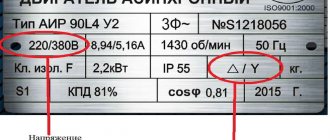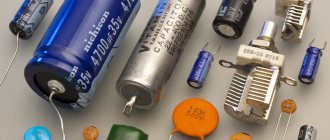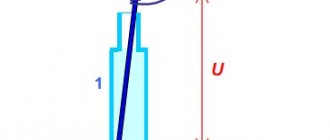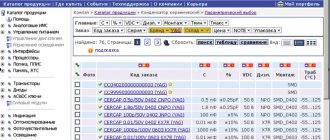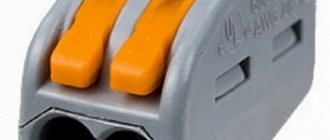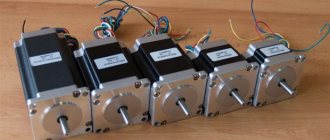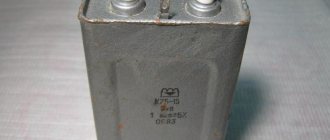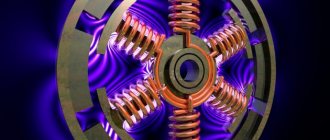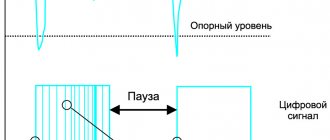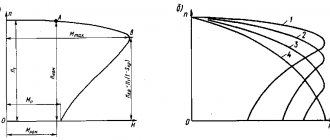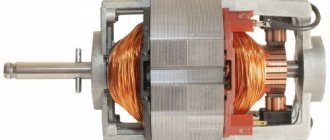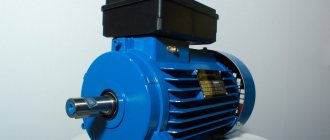In the article you will learn how you can connect a 380 motor to 220 V. In a household network, the voltage is single-phase 220 V. And most asynchronous motors are designed for 380 V and three phases. And when making homemade drilling machines, concrete mixers, emery machines and others, it becomes necessary to use a powerful drive. A motor from an angle grinder, for example, cannot be used - it has a lot of revolutions and little power, so you have to use mechanical gearboxes, which complicate the design.
Design features of asynchronous three-phase motors
Asynchronous AC machines are a godsend for any owner. It’s just that connecting them to a household network turns out to be problematic. But you can still find a suitable option, the use of which will result in minimal power losses.
Before connecting a 380 to 220 motor, you need to understand its design. It consists of the following elements:
- The rotor is made according to the “squirrel cage” type.
- Stator with three identical windings.
- Terminal box.
There must be a metal nameplate on the engine - all the parameters are written on it, even the year of manufacture. The wires from the stator go into the terminal box. Using three jumpers, all wires are connected to each other. Now let's look at what motor connection diagrams exist.
Let's find out how to connect the windings of three-phase electric motors
Three-phase asynchronous electric motors (synchronous machines are used as alternating current generators) always have three identical coils (according to the number of phases), and, accordingly, 6 outputs. Let's see how many wires come out of our unit. To do this, remove the bar
(this is a box on top where the ends of the windings are brought out) and let’s turn our careful attention to how the stator outputs are connected. Most likely we will see the following:
The beginnings of the stator leads are designated by the symbols C1 C2 C3, the ends - C4 C5 C6. Either the beginnings or ends of the windings can be connected to one point; this connection diagram is called a “star”. If 6 wires simply come out of the motor housing, then look for the designations C1 .. C6 on them, often in such cases the sign shows a connection diagram with capacitor ratings too. But in order to be able to connect a 380V machine to a 220V network, it is necessary to slightly change the pin connection diagram.
Star connection
Each winding has a beginning and an end. Before you connect a 380 to 220 motor, you need to find out where the ends of the windings are. To make a star connection, it is enough to install jumpers so that all ends are closed. Three phases must be connected to the beginning of the windings. When starting the engine from a three-phase network, it is advisable to use this particular circuit, since high currents are not induced during operation.
But it is unlikely that it will be possible to achieve high power, so hybrid circuits are used in practice. The motor is started with the windings turned on in a star configuration, and when it reaches a stable mode, it switches to a delta configuration.
Connection diagram for delta windings
The disadvantage of using such a circuit in a three-phase network is that large currents are induced in the windings and wires. This leads to damage to electrical equipment. But when working on a 220 V household network, no such problems are observed. And if you are thinking about how to connect a 380 to 220 V asynchronous motor, then the answer is obvious - only by using a delta circuit. In order to make a connection according to this scheme, you need to connect the beginning of each winding to the end of the previous one. Power must be connected to the vertices of the resulting triangle.
General rules
Before switching on, be sure to check the voltage value for which the electric motor is designed - if you connect a potential difference greater than the specified one, the windings will overheat; if it is low, it will not start.
As a rule, on asynchronous machines two parameters are specified at once, less often only one:
- 660/380 V;
- 380/220 V;
- 220/127 V.
The rating is determined together with the winding connection diagram - star or triangle. In the first case, the windings have a common point, and the phase wires are connected to the other three terminals of the coils. In the second, the end of one winding is connected to the beginning of the next in such a way that a closed circuit is formed. Some units are turned on only by a star, others by a triangle, and some can be independently connected in any of the ways; both characteristics are indicated on the nameplate of the electric motor.
For a triangle, the smaller voltage is used, and for a star, the larger of the two indicated. The difference is that three-phase motors connected in a star will have a soft start, while a delta motor can produce more power.
Physically connecting a three-phase electric motor to a single-phase network will not bring any result - the shaft will not rotate. The reason for this is the absence of an alternating electric field, which provides alternating effects on the rotor. Therefore, the problem can be solved by providing a bias in the electrical voltage and current in the phase windings. To get the desired result from one phase, you can additionally include a capacitor in the circuit, which will ensure a voltage lag of up to -90º.
However, it will not be possible to achieve a full voltage shift in the stator windings. Although the rated voltage is supplied to the electric motor, the efficiency will be only 30 - 50%, which will be determined by the connection diagram of the windings of the asynchronous electric motor.
Do not turn on the electric motor without load. Since it is not designed for such a mode, the electric machine will quickly fail. Minimize idling as much as possible.
Connecting the motor using a frequency converter
This method is at the same time the simplest, most progressive and expensive. Although, if you need the functionality of an electric drive, you won't regret any money. The cost of the simplest frequency converter is about 6,000 rubles. But with its help it will not be difficult to connect a 380 V motor to 220 V. But you need to choose the right model. Firstly, you need to pay attention to which network the device is allowed to connect to. Secondly, pay attention to how many outputs it has.
For normal operation in domestic conditions, you need the frequency converter to be connected to a single-phase network. And the output should have three phases. It is recommended to carefully study the operating instructions so as not to make a mistake with the connection, otherwise the powerful transistors installed in the device may burn out.
Using capacitors
When using a motor with a power of up to 1500 W, you can install only one capacitor - a working one. To calculate its power, use the formula:
Serb=(2780*I)/U=66*P.
I – operating current, U – voltage, P – engine power.
To simplify the calculation, you can do it differently - for every 100 W of power, 7 μF of capacitance is needed. Therefore, for a 750W motor you need 52-55uF (you need to experiment a bit to get the right phase shift).
In the event that a capacitor of the required capacity is not available, you need to connect in parallel those that are available, using the following formula:
Comm=C1+C2+C3+…+Cn.
A starting capacitor is required when using motors whose power exceeds 1.5 kW. The starting capacitor works only in the first seconds of switching on to give a “push” to the rotor. It is turned on via a button parallel to the working one. In other words, it causes a stronger phase shift. This is the only way to connect a 380 to 220 motor through capacitors.
The essence of using a working capacitor is to obtain the third phase. The first two are zero and phase, which is already in the network. There should be no problems connecting the motor; the most important thing is to hide the capacitors away, preferably in a sealed, strong case. If the element fails, it may explode and harm others. The capacitor voltage must be at least 400 V.
Testing and assembly
Next, they assemble the engine, attaching the main bolts to “check” and check the currents of each phase. Using current clamps, the currents of the windings of each phase through the load and the circuit breaker are checked. They should be the same. The engine is then reassembled by tightening all the bolts and checking that it rotates correctly and idles correctly.
If everything works fine, then the mechanism is disassembled again to coat the stator windings with varnish. The stator is placed in varnish to impregnate the windings and fill voids. Then it is lifted, allowing the varnish to drain, and dried in the open air or in a special dryer. To speed up drying, use an incandescent lamp with a power of 0.5-1 kW, inserted into the stator and connected to the network.
After drying the engine, it is completely reassembled and the insulation resistance is checked again. Check the engine at idle speed. It is better to use a step-down transformer and a circuit breaker (preferably an RCD) for this purpose. Only after checking can the motor be used at full voltage.
The following expert advice will help you rewind correctly:
When carrying out all work, it is necessary to use working tools, as well as known-good measuring instruments and testers.
Particular attention should be paid to the serviceability of battery protection, the quality of insulation and the moisture content of materials used during repairs.
A single-phase asynchronous electric motor with a squirrel-cage rotor must have a starting and operating winding. Their calculation is carried out in the same way as the calculation of the windings of three-phase asynchronous motors.
The number of conductors in the slot of the working winding (fits into 2/3 of the stator slots) N р = (0.5 ÷ 0.7) x N x U s / U, where N is the number of conductors in the slot of a three-phase electric motor; U с — single-phase network voltage, V; U is the rated phase voltage of a three-phase motor, V.
Lower coefficient values are taken for engines of higher power (about 1 kW) with short-term and intermittent operating modes.
Diameter (mm) of the wire along the copper of the working winding, where d is the diameter of the wire along the copper of the three-phase motor, mm.
The starting winding fits into 1/3 of the slots.
The most common are two options for starting windings: with bifilar coils and with additional external resistance.
A winding with bifilar coils is wound from two parallel conductors with different directions of current (the leakage inductive reactance of the bifilar windings is close to zero).
Connection without capacitors
But you can connect a 380 to 220 motor without capacitors; you don’t even have to buy a frequency converter for this. All you have to do is rummage around in the garage and find a few main components:
- Two transistors type KT315G. The cost on the radio market is about 50 kopecks. per piece, sometimes even less.
- Two thyristors type KU202N.
- Semiconductor diodes D231 and KD105B.
You will also need capacitors, resistors (fixed and one variable), and a zener diode. The entire structure is enclosed in a housing that can protect against electric shock. The elements used in the design must operate at voltages up to 300 V and currents up to 10 A.
It is possible to carry out both mounted and printed mounting. In the second case, you will need foil material and the ability to work with it. Please note that domestic thyristors of the KU202N type get very hot, especially if the drive power is over 0.75 kW. Therefore, install the elements on aluminum radiators; if necessary, use additional airflow.
Now you know how to independently connect a 380 motor to a 220 motor (into a household network). There is nothing complicated about this, there are many options, so you can choose the most suitable one for a specific purpose. But it’s better to spend money once and purchase a frequency converter; it increases the number of drive functions many times.
Theory of V. Golik
This implementation is based on starting the motor using the existing element base. The power part of the electric switch, which is used for switching, includes the following powerful elements:
- two diodes: VD 1 and 2;
- thyristors: VS 1 and 2.
All these parts are connected using an ordinary bridge circuit. But, in this circuit, these elements implement another function - they shunt the winding of the connected motor through their “arms” of one diode and transistor. This is carried out immediately after the unit reaches the amplitude parameters of the sinusoid presented in the diagram. This connection creates a bidirectional electronic unit that responds to harmonic waves during operation. They come in two types:
- positive;
- negative.
Using diodes VD 3 and 4, a pulse voltage with two half-cycles is realized. This signal goes directly to the control circuit. It is limited and further stabilized using the resistor element R1 and the stabilizer VD5.
The signals aimed at opening the thyristors of the electric key come from transistors with 2 poles; in the figure they are marked as VT 1 and 2. The variable resistor R7, designed for 10 kOhm, performs the important function of regulating the opening moment of the thyristor.
In situations where its regulator is in the initial resistance position, the electrical unit is activated even at the lowest amplitude voltage that occurs in winding “B”.
The presence of the highest input resistor R7 allows you to turn off the switch. The circuit starts when the position of the slider of the above resistor corresponds to the highest current phase shift between the coils.
Electronic key on a triac
The start of the system is implemented quite simply - you need to move the R7 slider to a position that fully corresponds to the largest phase shift of the currents between the coils. Next, the regulator shifts, thereby determining the most stable operating mode, which directly depends on the level of applied load and the power of the electric motor. Power units with different ratings are interchangeable and widely represented on the domestic market.
Power components of the system, implemented for further operation with low-power motors, can be designed without cooling radiators in the design. When distributors operate at maximum resources, the use of a heat sink is mandatory.
Electrical units are used under 220V mains voltage. Individual components must be carefully insulated, thereby protecting them from accidental touches. Compliance with security measures is another important aspect when implementing a connection that must be observed.
